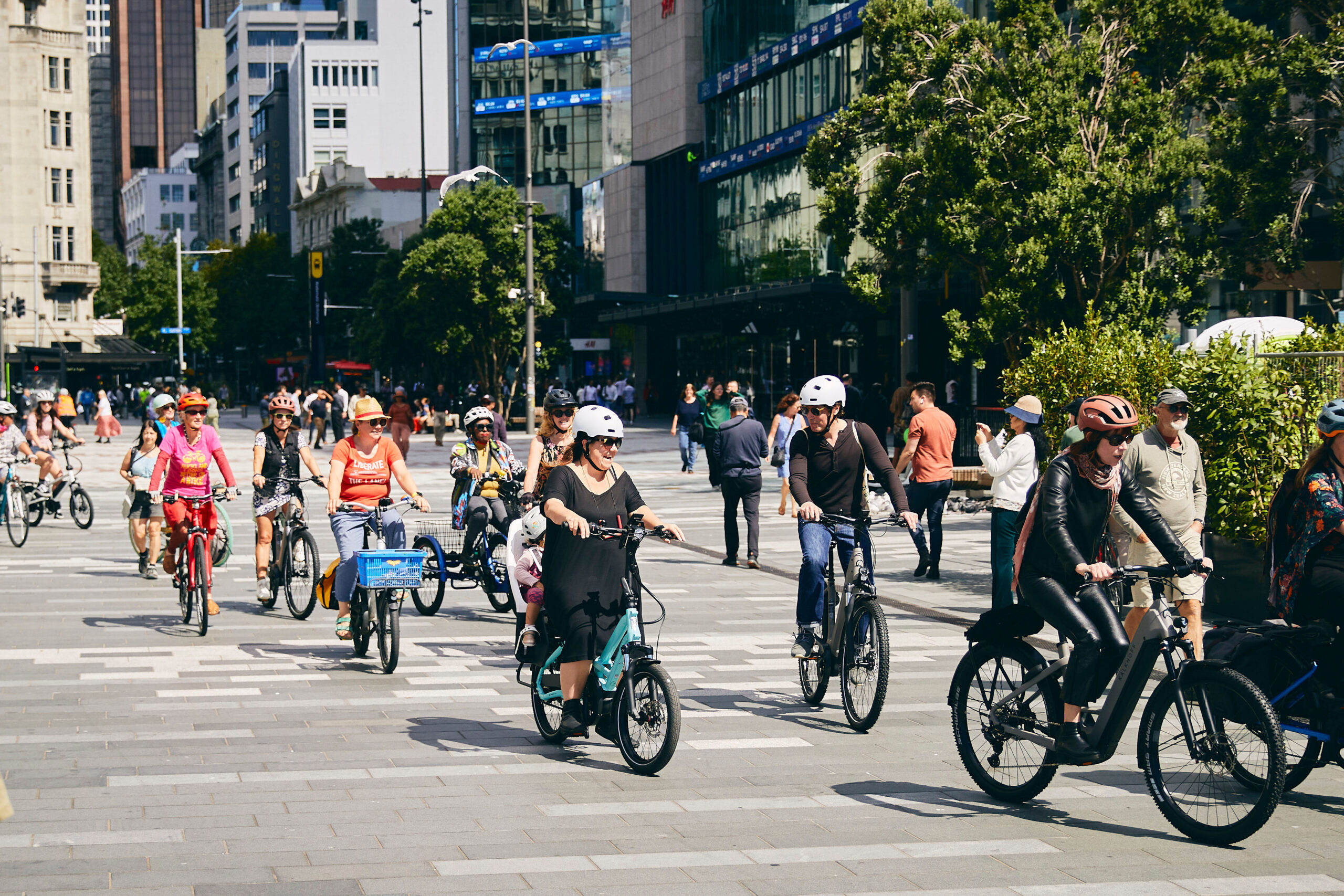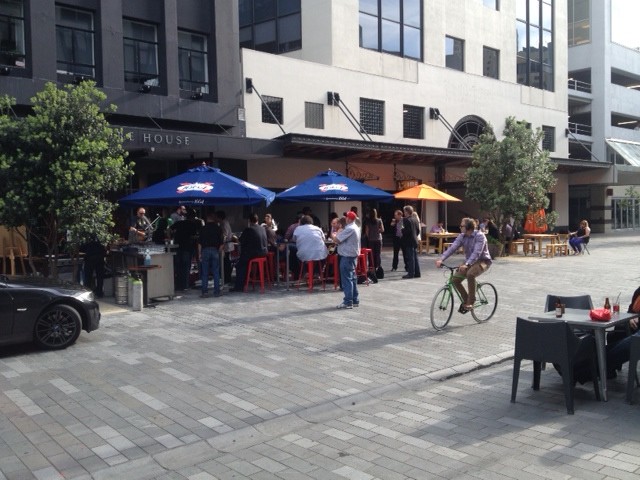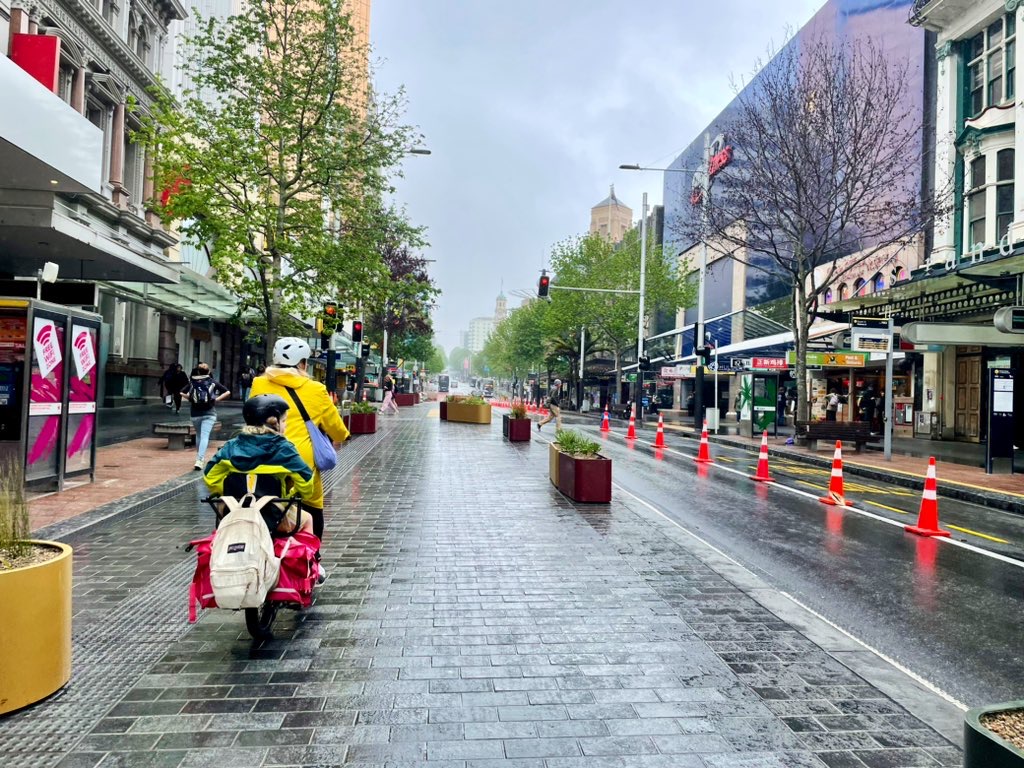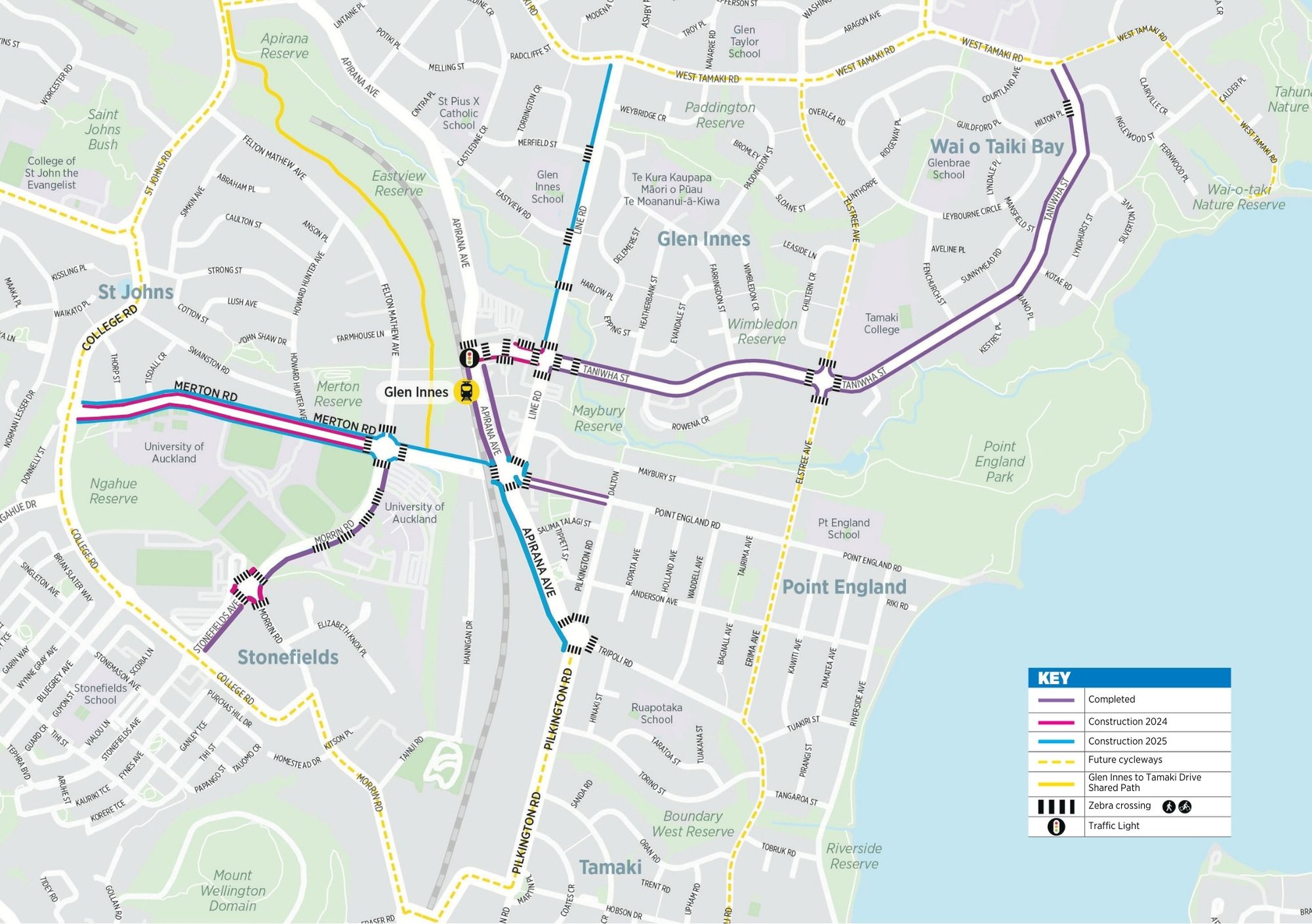Written by Lou Annabell for Bike Auckland.
Our campaign Cycling Works for Tāmaki Makaurau has a simple message: protected bike lanes are good for business and good for Tāmaki Makaurau Auckland. Here’s why.
Healthy Employees
Two thirds of urban trips in Aotearoa are shorter than 6 km, a distance that is easily bikeable in 20 minutes.
Riding a bike is an opportunity to build physical activity into daily life – regular biking has been shown in studies time and time again to significantly reduce the risk of heart and respiratory disease, high blood pressure, cancer, and Type II diabetes.
For employers, having more of your people commuting to work by using a bike means more alert, focused, and healthier staff. This means increased productivity and fewer days off sick.

When we ride a bike to work we are not exposed to the usual commuting stresses such as traffic congestion, parking nightmares, rising costs of fuel, and dirty air. If we are supported to ride a bike instead, with secure bike parking and safe bike lanes, we can arrive to our destination on time, feeling energised, and with more money in our pockets!
Greater Spending
Providing safe cycling infrastructure – such as protected bike lanes and safe-speed zones – has been linked to increased retail sales.
In 2023 Te Whanganui-a-Tara Wellington City Council released a report called Changing Lanes, which investigated the impact of changes to street layouts on retail businesses. Streets included in this report include Thorndon Quay and Dixon Street, two of Te Whanganui-a-Tara’s most bustling retail areas. The report concluded there was a neutral impact on nearby businesses.
This evidence is recurring – from New York City, to Toronto, to North Carolina, to our Tāmaki local, Fort Street – changes to streets and roads to accommodate people who bike or walk does not negatively affect business. In fact, it usually improves it.
A 2018 study by Auckland City Council, Share the Wealth: Shared Spaces Make Great Business Places, looked at the upgrades completed on Fort Street, which reallocated driving lanes to make the street more accessible for people walking and on bikes. It found retail spending increased 47% and hospitality spending by a whopping 429%.

Why is this?
When streets have less traffic, they become more pleasant, there is more space for eateries and cafes to have more seating; street trees; community gardens; markets and festivals – and it is there that city spaces as we know them can be completely transformed, and more attractive for people.
The other reason is as we all know, cars are expensive. If it is easier and safer for more people to get around without needing a car, they often have more money to spend in local businesses.
Pleasant streets
“My first impression was that it feels damn good to be sheltered from the cars.
So much of cycling in Auckland is spent being pushed into gutters, steeling yourself as you’re overtaken by buses and desperately scouring the road ahead to work out where the bike path went.” wrote Josephine Franks for Stuff in 2024, reflecting on the recent improvements to cycleways on Karangahape Road.

Imagine – where once we sped through, hurried, flustered and defensive, we could now linger, gather and meet; connected.
“I feel safest and happiest when riding along wide, clean, well-lit off street cycleways, or quiet side streets. I can really relax and enjoy the ride in these spaces.” wrote my friend Alex, when I asked him what a good ride through Tāmaki feels like for him.
Safer and more attractive places for biking are not only an asset to our local communities, but also to our international visitors, increasing Aotearoa NZ’s competitiveness as a tourism destination. Biking paths through the region can be linked to outer city trails, which means seeing Aotearoa NZ by bike – rather than car, camper or bus – is more desirable (and sustainable!).
“Changes to the traffic network are working to reduce general traffic, congestion and pollution and show people that they have priority on Queen Street.”
Wai Horotiu Queen Street Project Report, Tāmaki Makaurau Auckland City Council 2023

I love Queen Street at lunch time, it feels spacious and alive. People walking and riding their bikes, sitting out in the sun beneath a nikau tree, catching up, reading books, children playing. If the roads ran here still as they did in 2021, this wouldn’t exist. It strikes me that although the roadworks involved in changing streets annoy us all, it is so brief and fleeting compared to the ongoing benefits of wider bike paths and walking areas.
If we are more connected, healthier, supported and economically better off, what more is possible?
In summary:
- Biking keeps employers and employees healthy and therefore more productive
- Changes to roads to support biking is linked (both internationally and in Aotearoa) to greater spending
- Changes to roads to support biking creates more pleasant streets, which in turn boost spending, tourism and connection to our community
If this article was helpful to you, please pass it on to your friends, whānau, colleagues and employers, and talk to them about our Cycling Works campaign so we can all get moving toward a more joyous, sustainable, and accessible Tāmaki Makaurau.




